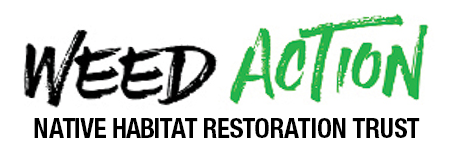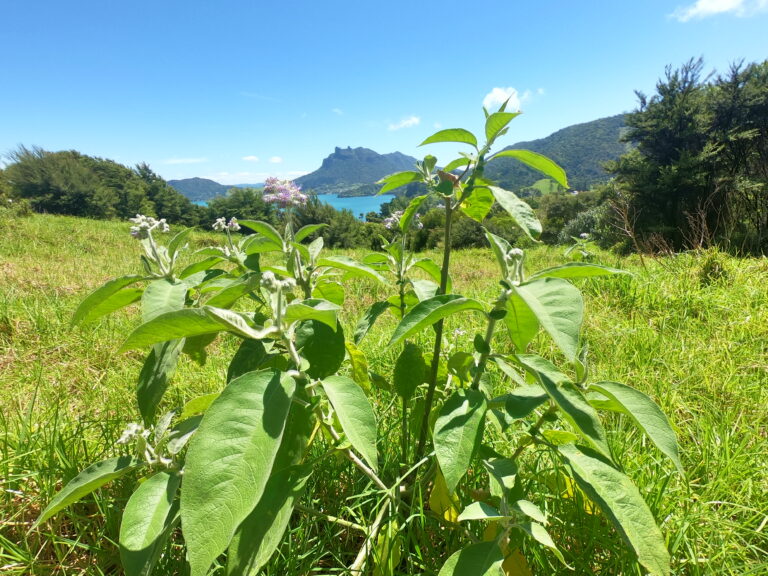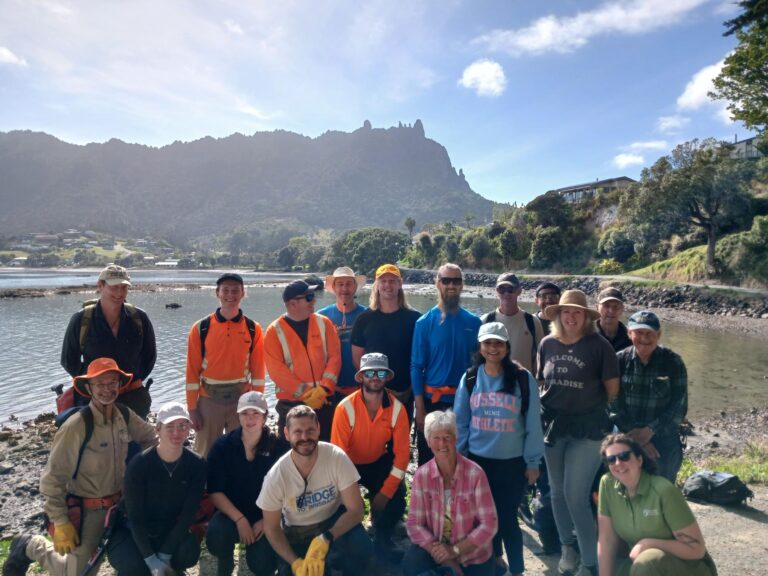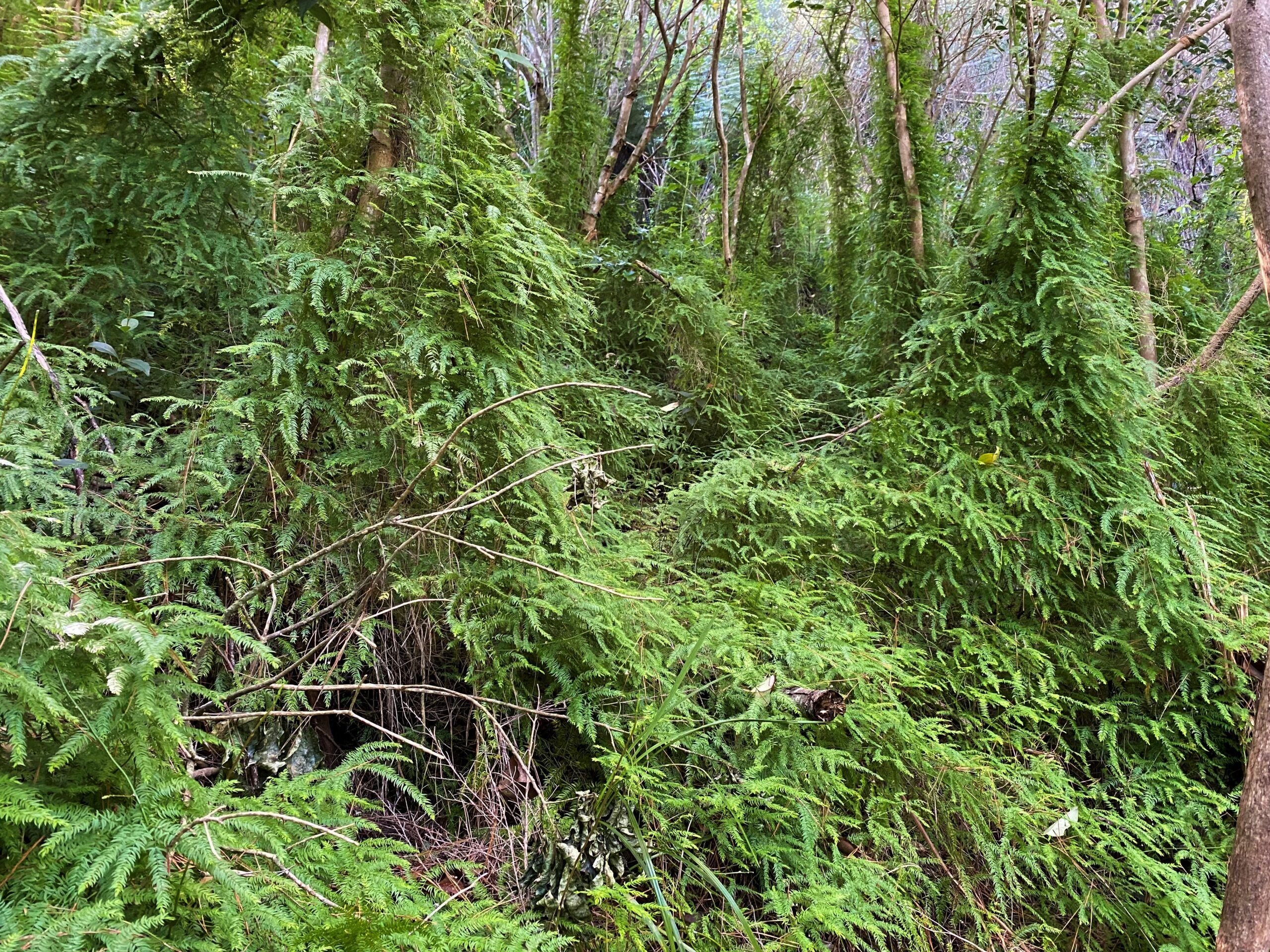
From South America, this climber produces very high numbers of small, red berries, easily spread by native and exotic birds. One of several invasive asparagus ferns, Climbing Asparagus is one of the worst climbers impacting on native forest and shrublands in NZ. It is widespread and abundant in all regions of the country and locally it is a real menace in Whangarei Heads. There are massive infestations from Pataua South across the hills to Parua Bay and it is particularly bad in the Owhiwa Rd area. It has also shown up in smaller quantities in Reotahi and Manaia.
This shade tolerant vine can establish in a healthy canopy of bush and once there, it spreads rapidly over the ground and up to 4 metres into the understory. Climbing asparagus prevents the growth of established species as well as the regeneration of native seedlings. It can also ring bark and kill soft-barked shrubs and trees. It has well dispersed seeds and long-lived tubers that resprout easily, requiring follow up control.
Whether you have just a small amount or an existing dense infestation, read on for the best way to deal with this!
How do I control it?
The methodology to get rid of climbing asparagus all depends on the nature of the infestation. Not sure which method to use? Contact info@weedaction.org.nz for more help!
Individual plants/ small patches: can be dug out (ensuring tubers are removed). Best done after a period of sustained rainfall. Individual plants or small patches of asparagus can be sprayed using glyphosate at 10ml + meturon at 0.5 gms/ 1L of water + a penetrant.
Large entrenched infestations: can be done in one of three ways. It is important to limit damage of native vegetation so all methods have this in mind.
Method 1: Defoliation by spray with no removal of weeds from native vegetation. This is solely using a knapsack with glyphosate at 10ml/L and no penetrant to ensure the herbicide doesn’t stick to desirable vegetation. This will still, however, cause some non- target damage to natives and will also not translocate into the roots of the asparagus. The positive outcome in effect is to reduce the structure of the infestation to ground level and make future control efforts easier. Sufficient regrowth of up to 0.5m will be required before spraying and use the glyphosate/ meturon mix (above) to do this.
Method 2: Cut climbing asparagus at chest height, extract the asparagus from desirable vegetation and lay down on ground to present for immediate spraying. This two phase control involves firstly sweeping through the target block and cutting and unravelling vines to allow for as much foliage to be sprayed on the ground, and, secondly foliar spraying with the glyphosate/ meturon mix plus penetrant. The advantage of this method is that a level of control of the rootstock is immediate, however, translocation through old tough vines is somewhat limited and many root tubers will remain viable and resprout.
Method 3: This involves cutting asparagus away from trees and thick patches of vines near ground level. With a battery powered hedge trimmer this is a surprisingly rapid method and the asparagus can literally be carved away from native trees. This will prevent a season’s fruiting if done before November (a great winter job!) and buys a lot of time (up to 4 months) before having to come back and spray the 0.5m regrowth with the glyphosate/ meturon mix plus penetrant. The other benefits of this method are that there is minimal non-target damage because the patches of growth are isolated, and translocation of herbicide is more effective because the fresh active growth metabolises the chemical better than older hardier vine stems.
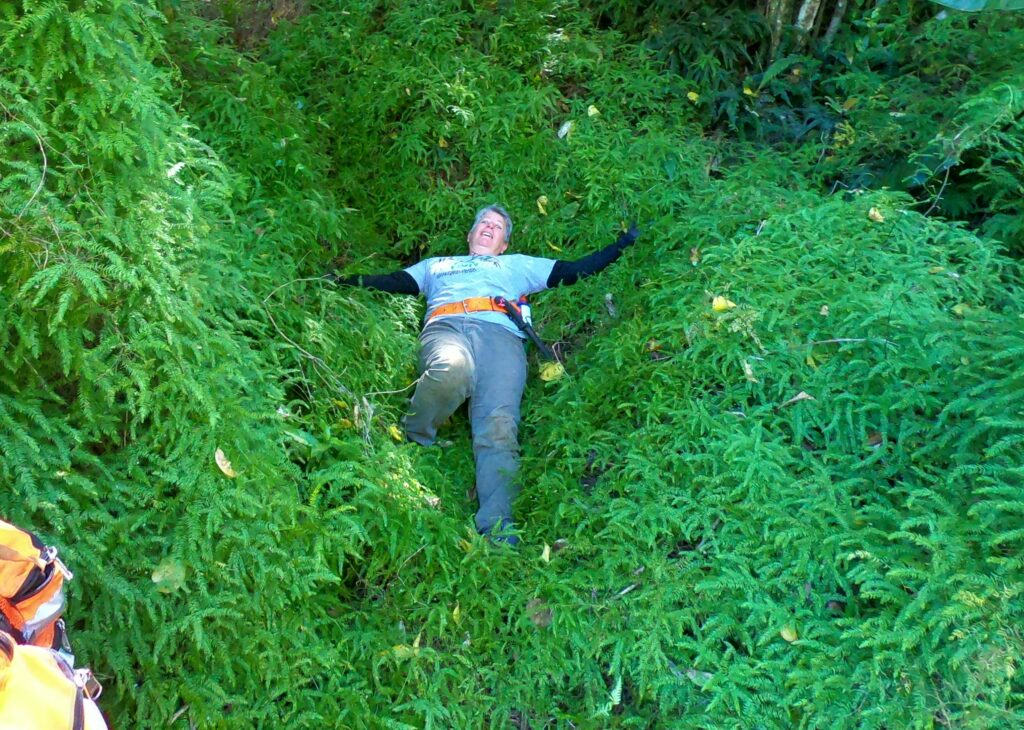
CAUTION: when using any herbicide or pesticide PLEASE READ THE LABEL THOROUGHLY to ensure that all instructions and safety requirements are followed.
Get in touch with us at info@weedaction.org.nz if you would like some assistance in applying the above control techniques or equipment and herbicides to do so. We can supply any of the products or equipment needed, for free, thanks to support from Northland Regional Council.
